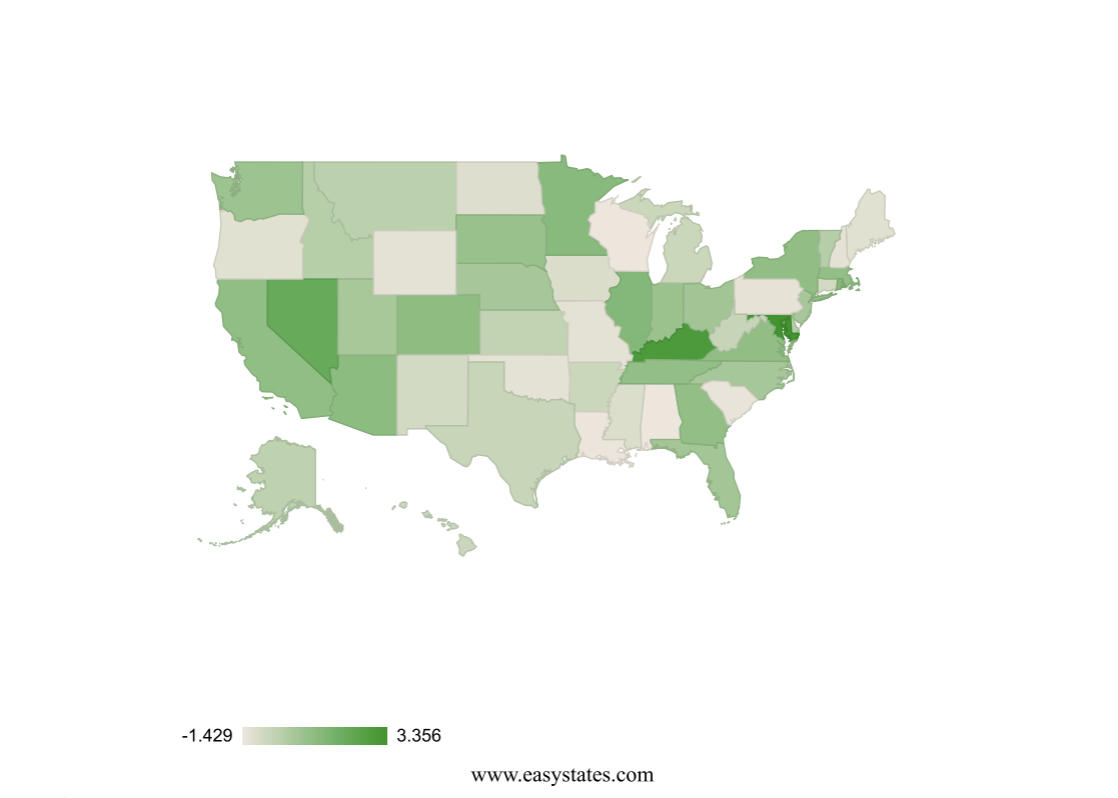The heterogeneity in state voting-rights laws makes it difficult to compare and contrast current voting protections and suppressions in different states, says Baodong Liu, professor of political science at the University of Utah. He’s compiled information from all 50 states concerning four key aspects of electoral laws which, he says, deserve special scrutiny:
- Will all ballots be counted fully and efficiently?
- Are mail-in ballots allowed and to what extent?
- Can a voter use early in-person voting?
- How strict is the voter identification law?
Using data available from Liu’s website, www.easystates.com, he’s taken a closer look at the current picture of voting protections and suppressions in all 50 states.
Counting the Ballots
An urgent question is of course whether states will be ready to announce the winner on the Election Day. To find the efficiency of a state in counting all ballots, there are three important questions: Does the state have a pre-processing of ballot procedure in place? Which date does the state start counting the ballots? How late does the state allow counting all ballots that are late-arriving but postmarked before the deadline?
Using 2020 data from all 50 states, Liu presents an index to measure the level of “ballot-counting efficiency” in all states. Five states (Alabama, Wisconsin, Louisiana, South Carolina and Pennsylvania) have the lowest ballot-counting efficiency scores. It is important to note that two of these five states, Wisconsin and Pennsylvania, are key swing states in the 2020 presidential election. South Carolina, also among the lowest ballot-counting-efficiency states, will have one of the nation’s most publicized U.S. Senate races between Republican Lindsay Graham and Democrat Jaime Harrison. The index also shows that the most efficient states (Maryland, Kentucky, Nevada and Illinois) in counting ballots include Nevada, a state where President Trump has campaigned vigorously, Liu says, and has used litigation to challenge various voting and ballot-counting regulations.
Mail-in Voting
The COVID-19 pandemic has made mail-in voting the alternative to traditional in-person voting. But not all states have provided the equal access to the mail-in option for voters. Liu examined mail-in accessibility based on whether or not a state’s electoral rule requires an excuse for such an option. Some states allow mail-in voting to be available to those who request it. There are also states who use mail-in voting as a primary mode of voting. Once a voter secures the option of mail-in voting, it is not guaranteed, however, that their vote will be counted. Some states require that mail-in ballot be notarized or be signed by a witness. Furthermore, mail-in voting can be particularly uncertain when states require different deadlines for late-arriving ballots with a valid postmarked date.
Based on the measures of mail-in accessibility, notarization requirement and postmark deadlines, Liu calculated a mail-in-voting-effectiveness index. Five states have the toughest restrictions on mail-in voting based on the index scores: Mississippi, Missouri, South Dakota, Maine and Oklahoma. It is worth noting that the Maine’s second congressional district which President Trump carried in 2016 will be once again critical to his electoral coalition in 2020. In comparison, the five states with the most effective mail-in voting systems, Washington, California, Utah, New Jersey and Nevada, are primarily in the western region of the country, and only Utah is a Republican stronghold.
Early Voting
The 2020 presidential election has broken at least one record in early in-person voting. More than 50 million ballots were already cast ten days before the election date. But, again, not all states provide an equal access to early in-person voting. While 46 states have an early in-person voting option available to everyone, Liu found that two states, Missouri and Mississippi, only allow those who are eligible to do so, and two other two states (Oregon and New Jersey) make it available only to the voters who cannot use mail-in voting.
Voter ID Requirement
The states have shown a great variation in their voter identification laws, according to Liu’s data. The most restrictive seven states that request strict photo identification are Georgia, Tennessee, Kansas, Indiana, Mississippi, Wisconsin and Virginia. The voter identification laws in other states range from “No documentation requested” to “ID requested (but no photo necessary)” to “Photo ID requested” and to “Strictly non-photo documentation.” The most common voter-ID law is the “ID-requested (but no photo necessary)” standard adopted by 34% of the states.
The examinations of all 50 states based on the above four measures allowed Liu to develop an overall index of voting suppression. Based on the four categories of state electoral laws, the most restrictive states tend to be in the South, and the five states with the most restrictive voting regulations are Mississippi, Missouri, Alabama, Oklahoma and Wisconsin (indicated by the darkest colors on the map). On the contrary, the five with the least voting restrictions are from Maryland, Nevada, California, Washington and Illinois where the Democratic Party has had a greater influence in state legislatures.
Liu asks if, with current protective voting rights laws primarily in Democratic-controlled states and a dominant conservative majority in the Supreme Court, will these voting rights laws face an unprecedented reversal in just weeks, if not days, after the election? These urgent questions are likely to be answered, he says, if the Supreme Court is indeed involved in deciding the final outcome of the 2020 presidential election.
Find the maps here.
Find the data Liu used to create these maps here or explore this and other statistical data at easystates.com.



